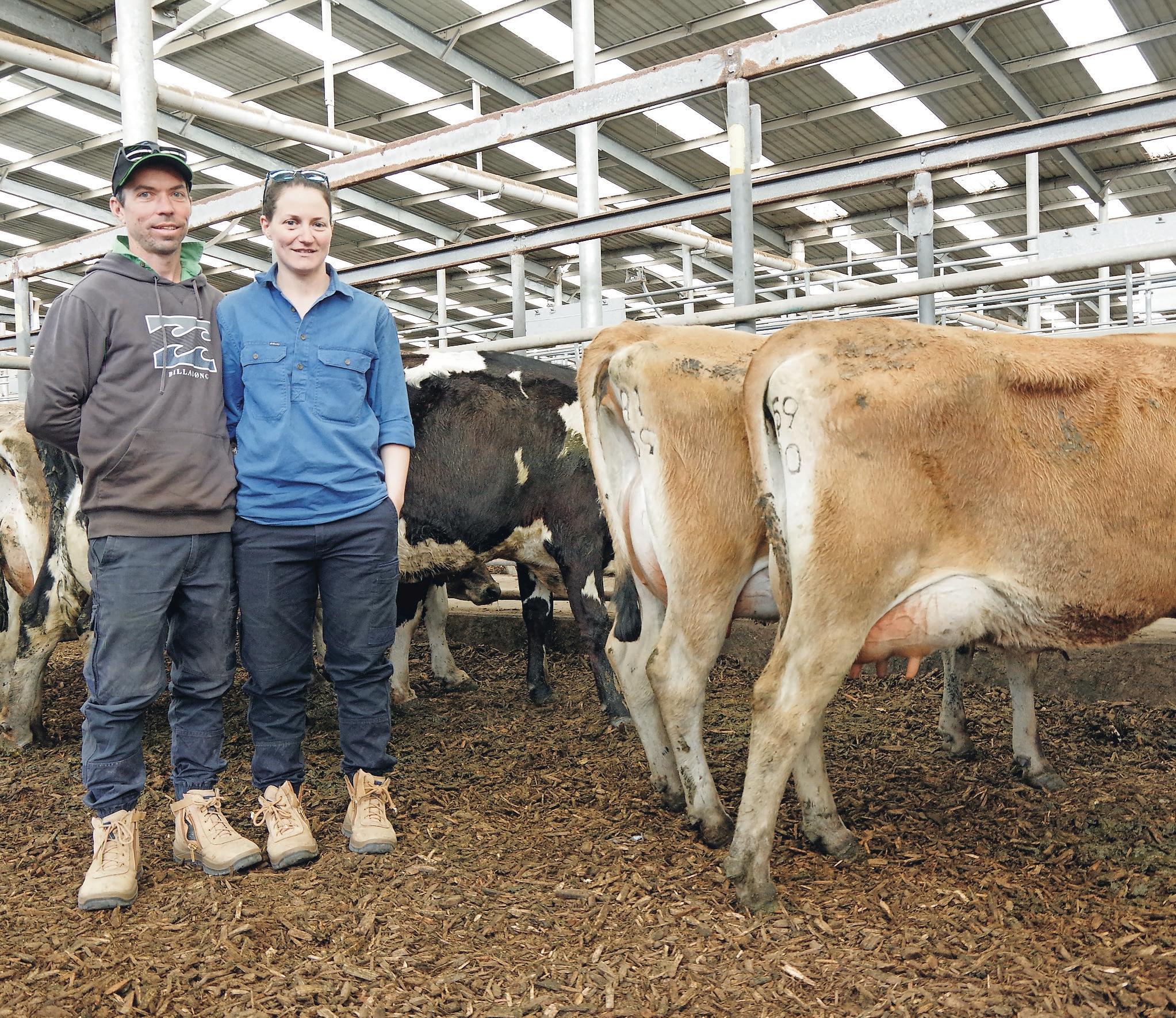


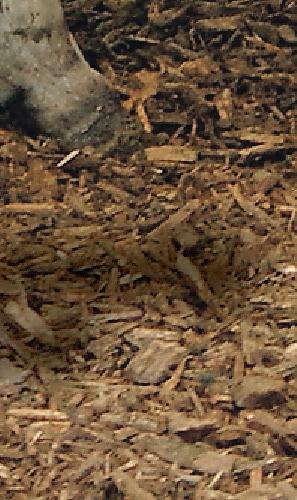


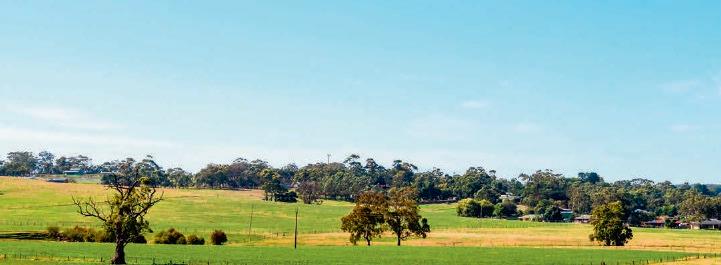
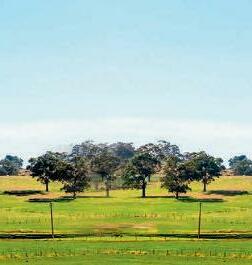
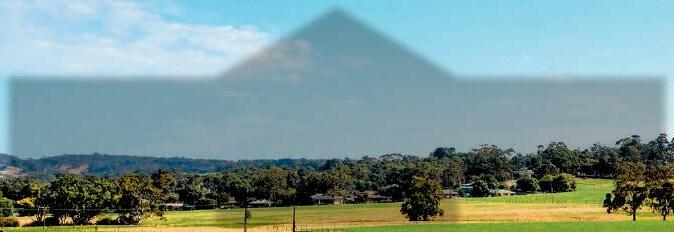
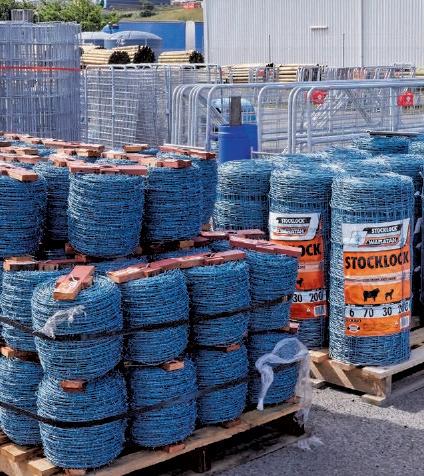



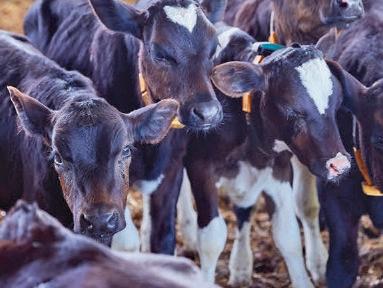

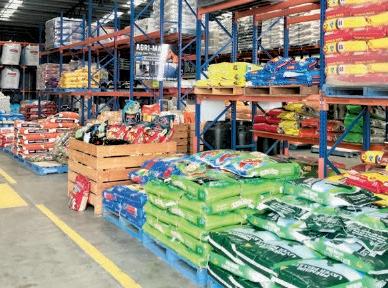

GIPPSLAND REGION DECEMBER, 2022 ISSUE 146 FAMILY CALLS TIME OUT Shaun
ALL THINGS RURAL ...That’s what we do better! Cobram Cohuna Colac Corryong Dumbalk Eskdale Finley Foster Heywood Kiewa Koroit Korumburra Fuel available at these stores. VICTORIA & NSW STORE LOCATIONS - TRADING HOURS MON-FRI 8AM-5PM SAT 9AM -12PM. Times may vary - contact store. îs. 32519 Leongatha Maffra Numurkah Orbost Rochester Simpson Swan Hill Wangaratta Warragul Wonthaggi Yarram FARM SUPPLIES PASTURE & CROP ANIMAL MANAGEMENT GENERAL MERCHANDISE AG Warehouse™ aims to support our customers in the areas of cropping, dairy, livestock, equine and lifestyle farming with the latest technologies and best products available in the market through our strategic vendor partners. Our team is experienced, knowledgeable and focused on servicing the farming needs of our customers. VISIT OUR WEBSITE agwarehouse.com.au
and Sharna Cope, along with his parents Graeme and Jenny, recently sold their dairy farm at Fish Creek, along with 650 cows. A shortage of reliable workers was a key driver behind selling up. See page 6.
• Grow your crops faster
• Convert atmospheric nitrogen into plant available nitrogen... FOR FREE!
• Unlock bound nutrients in your soil and send them into your plants
• Build your soil structure and improve your plants performance
• Reduce expensive fertiliser applications including urea and super phosphate
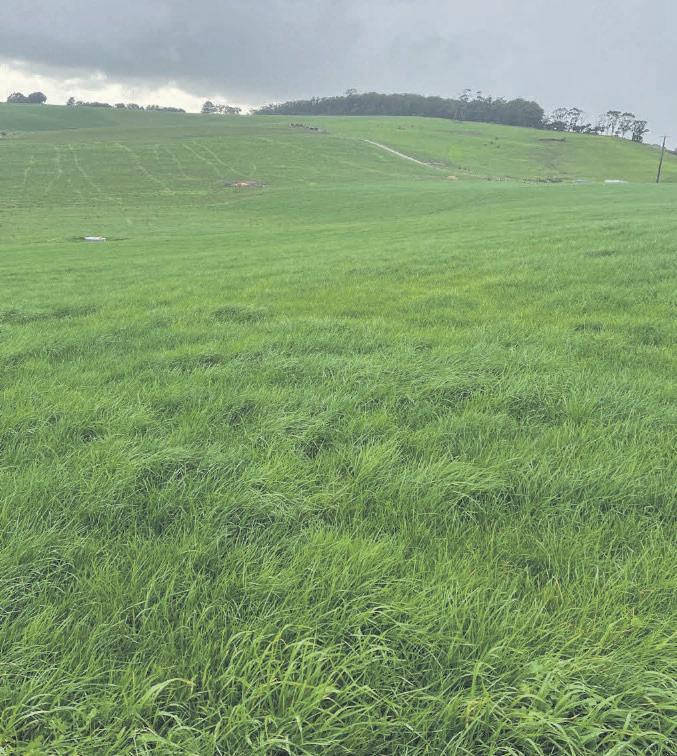
• Protect your plants and crops from pests and disease
• Improve your animal’s nutrition and performance. Remember, they are what they eat!
• Increase energy, protein, nutrients and starch while reducing non digestible fibres in your pastures to improve milk solids, milk production, hook weights and fat scores
To ensure the bacteria flourish from the second they hit the ground, mix with Soil Mate Amplify, a carbon rich, seaweed based biostimulants containing humic and fulvic acid.
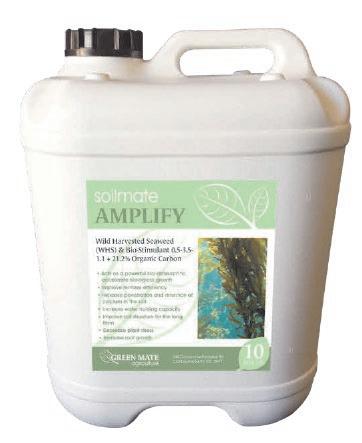
Start your regeneration journey with Soil Mate Revival and Soil Mate Amplify, containing 5 hand selected species of Bacillus bacteria for peak crop performance, chelated minerals, organic carbon, seaweed, kelp, fish, humic acid and fulvic acid.
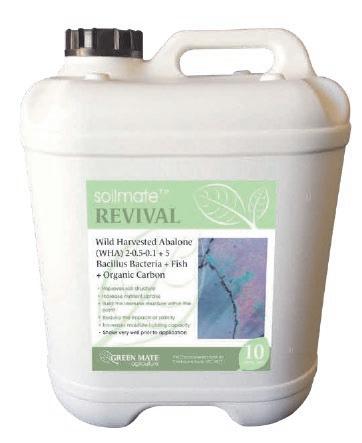
of Underperforming Pastures & Crops? Let Soil Mate ‘Revive’ your farm and ‘Amplify’ your returns.
Revival contains the exact 5 species of
your farm needs to:
Sick
Soil Mate
Bacillus bacteria
Winter growth 2022 in Gippsland using Soil Mate Revival and Soil Mate Amplify as part of overall nutrition program
All
products proudly manufactured in Melbourne For more information or to purchase, contact Greenmate Agriculture 740 Cranbourne-Frankston Rd Cranbourne South, VIC, 3977 peter@greenmate.com.au 0477 477 005 www.greenmate.com.au rob@greenmate.com.au 0415 053 730
Soil Mate
Chair’s message




Teamwork is key to success
THE GIPPSDAIRY board held its annual general meeting recently at Traralgon Vineyard.

Incumbent directors Shiona Berry and Sarah O’Brien were both recommended by the independent selection panel to be appointed for a further term on the board.
We were also pleased to welcome two new directors to the board — Mick Hughes, who is a dairy farmer from Inverloch, and Tony Platt, who works as a bank manager in Sale.
We farewelled retiring directors Michelle Axford, dairy farmer from Korumburra South, and Dan Armstrong, consultant and farm economist from Jindivick. Both have been outstanding contributors to GippsDairy and the Gippsland dairy industry during their time on the board, and we thank them for their commitment and wish them well in their next endeavours.
Those of you who have had the opportunity to work in a diverse team will understand the value that having different perspectives and lived experience brings to that team and its ability to make good decisions and get good outcomes.
A board is no different, and we try to make sure the GippsDairy board has sufficient


diversity, including age, gender, background, region, farm size and type.
As directors we each bring our own skills, experiences and views, but then come together as a group to make decisions that are in the best interests of the organisation we are governing.
In the case of GippsDairy, this means we work towards achieving our vision of a vibrant and sustainable dairy industry in Gippsland. We have a statement of rules, a strategic plan, and values to guide us.

After two years online due to COVID-19, it was wonderful to be able to again hold an industry dinner following our AGM, and I was pleased that so many of you were able to join us.
Our guest speaker was Stuart Crosthwaite, who shared his journey in dairy as a service provider, dairy farmer and founding member of the Mountain Milk Co-operative in the Alpine Valleys.
The GippsDairy team has really enjoyed being able to get out and about, delivering events and courses in person again — including our first GippsDairy Muster.
You will see some new faces at GippsDairy over the coming months, please introduce



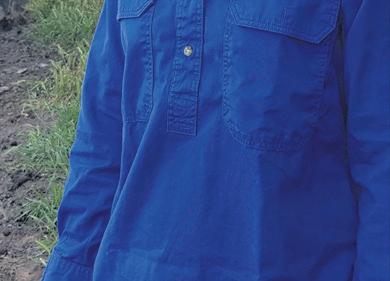
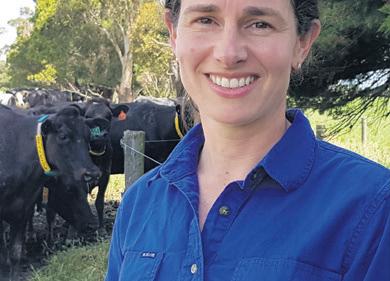
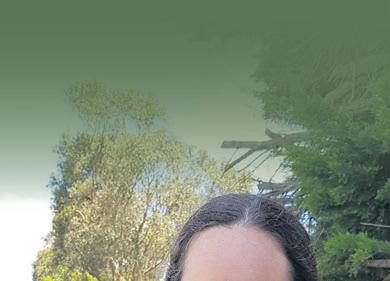
yourselves and make them feel welcome.
On-farm, we have some challenges to navigate over the remainder of the season.

At the time of writing in the middle of November, there’s a stiff wind blowing in from Antarctica, occasional hail, grass growing long in the paddock and many tractors parked in sheds waiting for the water to recede and the sun to come out. Feed and fodder prices are highly volatile, and availability a big unknown.
Our thoughts are with those who have been directly impacted by flooding across the country.
I hope that you will take the opportunity to get along to a discussion group, field day, course, community event, Christmas party, or even just visit a neighbour over the coming months.
There is so much value in being able to share the challenges and successes on-farm, and realise that we’re not alone in trying to navigate the uncertainty we are facing. We are fortunate to have a strong milk price to support us.
On behalf of the board and team at GippsDairy, I wish you, your families and communities a safe and happy festive season.
Lauren Finger GippsDairy chair

Renewable energy has made such a huge difference to the Wilandra Farms business, it is now moving towards being carbon neutral.

Wilco Droppert and Sandra Jefford were faced with energy bills greater than $120,000 a year for their irrigation and dairy operations near Sale, before they had an energy audit done in 2018 to see what changes could be made.
The audit report showed there were many ways to improve energy efficiency.
Steps included installing larger diameter irrigation water pipes, replacing inefficient pumps and changing nozzle sizes on pivots.

Wilco and Sandra also wanted to generate their own power and engaged Steve Soutar from AEI in Morwell to design a renewable energy action plan.
With funding from Agriculture Victoria, this plan has been implemented and the farm has 200kW of solar panels that provide power for the majority of the irrigation. Other important features of the system
are the dam, automation on all pivots and at bores and the dam pumps, and the energy management system that co-ordinates irrigation with available energy.

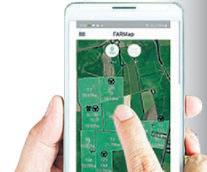
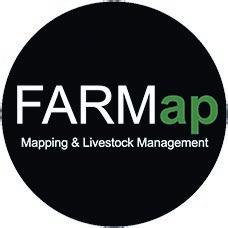

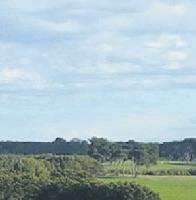
The renewable energy system helped lower Wilandra Farms’ irrigation energy bills from about $80,000 to just $1200 last year.

Not only are their costs dramatically decreased, but their greenhouse gas

emissions are also reduced, labour input for irrigation has dropped by about 15 hours a week, and the farmers sleep better at night because most irrigation happens during the day.

Changes made in the dairy to date include replacing old oil ring vacuum pumps with a lobe pump (which requires about 55 per cent less power) and improved water flows through the
plate cooler, which gets milk to the vat about two or three degrees cooler than previously.
The realisation that greenhouse gas emissions can be reduced, and carbon stored in the soil and vegetation, has led Wilco and Sandra to look at how they can store more carbon than the farm emits, if animals’ methane emissions are reduced by dietary modification.
This complex topic will be covered in a field day planned for Thursday, February 2.
Other speakers will include Lachlan Monsbourgh from Rabobank, Charlie Prell from Farmers For Climate Action, Steve Soutar from AEI and Elissa McNamara from Dairy Australia.
During the afternoon, participants will have the chance to look at the renewable energy equipment and talk to Wilco and Sandra about how the system works.
For bookings, go to: www.ivvy.com.au/ event/wilandra2023
For other inquiries, call Deanne on 0419 878 055 or John on 0412 368 739.

BANKING ON RENEWABLE ENERGY
GIPPSLAND REGION // 3 DAIRY NEWS AUSTRALIA DECEMBER 2022 Australian Mapping produces an accurate farm map to assist farmers in the management of their land and their business. An accurate farm map has many and varied uses including: • Quality assurance purposes • Irrigation planning can help increase yields and save $$ by putting water only where needed • Save on your inputs with accurate mapping for fertilizer and spray applications • Whole farm planning • Whiteboards up to 1.2 × 2.4 metres available. Phone: 0429 171 685 www.australianmapping.com.au | email: sam.baulch@gmail.com GPS Farm Mapping An easy to use app that maps your farm and maintains your paddock and livestock records. Increase farm ef ciency, and reduce costly mistakes by giving your whole team access to the latest paddock and livestock records w: farmap.com.au e: info@farmap.com.au
Wilco Droppert and Sandra Jefford will share their renewable energy experiences at a field day on February 2.
Twice the farm exibility










 BY JEANETTE SEVERS
BY JEANETTE SEVERS
THE PRINCIPALS of Reynolds Farms operate two dairy farms to offset risk factors around extreme weather, such as droughts and floods, and herd management.
Dennis and Samantha Reynolds, with his parents Gilbert and Marisa Reynolds, own more than 405 hectares across two dairy farms at Orbost and Jarrahmond, in East Gippsland.
They milk two predominantly Friesian herds in two swingover herringbone dairies and harvest all their own hay and silage needs.

The Jarrahmond farm is irrigated, which gives them the option of milking some of the Orbost herd in this dairy during summer.
And each herd calves in alternate seasons, enabling cows to be carried over across the enterprise.
This past year, they have been rebuilding the herds post-drought. When the drought broke in 2019, herd numbers were down to 300 cows across both farms.
“We were keeping hold of heifers,” Dennis said.
“Normally we’d keep 100 heifers each year, but we cut that back to 80 during the drought.
“We’re slowly building milking numbers back up. We’re now at 400 cows and looking to build to 450 across both farms.”
Gilbert and Marisa operate the Orbost farm, where 220 cows are milked off 142ha. This herd is spring-calving.
A couple of farm workers are employed as milkers, on a roster of 10 days on, four days off. The family is looking for another milker, to replace Gilbert and Marisa in the dairy as they transition to retirement.
Heifer calves born on the Orbost farm are raised as herd replacements by Marisa and Dennis; while Gilbert and Dennis do tractor work, fencing and feeding out to the herds across both farms.
Dennis operates the Jarrahmond farm, where 180 cows are milked off more than 122ha. He is the sole milker on this farm.
The herd is autumn-calving. Having alternate calving patterns on each farm means that empty cows can be carried over, between farms, to the next joining season.
Heifer calves are retained, to grow up as herd self-replacements.
Dennis has also retained 14 steer calves this year, to grow out as dairy beef.
The Jarrahmond farm is irrigated. A centre pivot was installed in 2019, just before the long drought ended, to irrigate 20ha. There’s an additional 41ha irrigated by fixed lateral sprays, with the paddocks laid out in bays. Irrigation is from a bore.
There are some strategic values to irrigating the Jarrahmond farm.
“It enables us to grow feed,” Dennis said.
“With the autumn calving on Jarrahmond, I can make the season start early, with guaranteed pasture growth in February and March, which is often hot and dry weather.
“Irrigation also gives us options during severe droughts. We can keep growing pasture and bring the cows from the Orbost farm and keep milking them.
“Last summer, we brought some of the Orbost farm’s herd across to Jarrahmond, to milk in the dairy.
“The irrigation meant we had pasture all summer and by bringing some of the herd to Jarrahmond, it meant we didn’t have to feed out silage at Orbost.


“Given the wet summer, there was enough pasture growing for the cows that remained at the Orbost farm.
“Making that decision and actioning it, took out some of the work of feeding silage every day.
“But it did mean we kept milking through Christmas and summer, when we’d normally dry off the cows on the Jarrahmond farm.”
Production at Orbost peaks up around 31 litres/cow/day, with an average of 28 litres/ cow/day. On the Jarrahmond farm, production peaks at 26 litres/cow/day.
“We don’t overstock and I think that’s our success as farmers,” Dennis said.
“We harvest our own hay and silage across the farms. We raise our own heifers for self-replacements.”
Heifers and cows are all artificially inseminated before running with mop-up Friesian bulls for three weeks.
“We AI everything for three to six weeks. How long it takes depends on how much semen we buy,” Dennis said.

Bio-Boost delivers systemic NPK & Trace Elements economically
Bio-Boost Cal/Mag is specially formulated for low Calcium/Magnesium soils to increase leaf size and productivity. Using a highly soluble source of calcium like Cal/Mag 5:1 can quickly remove harmful sodium salts from the root zone, establish valuable calcium, magnesium and nitrogen levels, provide proper nutrition for rapid recovery and vegetative regrowth.
Bio-Boost NPK Foliage Spray is high in energy, with premium levels of Phosphorous, Nitrogen, Potassium and trace elements for good pasture crop nutrition. Within seconds of application the spray starts to work systemically, helping to correct deficiencies and improve the health of pasture. Reduces the need for supplements, helps with weight gain and productivity.
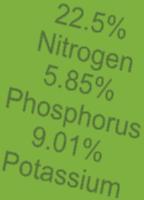
Bio-Boost delivers systemic NPK & Trace Elements economically!
Bio-Boost delivers systemic NPK & Trace Elements economically
Bio-Boost NPK Foliage Spray travels right to roots to compensate soil ‘lock-up’ and deficiencies in pasture and crops.


An excellent natural agent for fast pasture recovery
Call 1800 809 229 for more info or visit gfssolutions.com.au
Bio-Boost Cal/Mag is specially formulated for low Calcium/ Magnesium soils to increase leaf size and productivity. Using a highly soluble source of calcium like Cal/Mag 5:1 can quickly remove harmful sodium salts from the root zone, establish valuable calcium, magnesium and nitrogen levels, provide proper nutrition for rapid recovery and vegetative regrowth.
An excellent natural agent for fast pasture recovery.
Most farmers treat their effluent pond like s*** Dealing with effluent is a pain for most farmers. It's an expensive for what can be seen as a low-grade fertiliser. And so, many simply dump it on to pasture without strategic foresight. Can effluent be turned into a high-grade fertiliser? From our point of view, absolutely! And without the problems associated with bad bacteria - like pump nozzles, unpleasant odour, low nutrient content, and run-off. How do you beat bad bacteria? Simple - just add some special counteractive bacteria and oxygen the effluent pond and watch your problem become an asset.
Bio-Boost delivers systemic NPK & Trace Elements economically!
! is specially formulated for low Calcium/Magnesium soils to increase leaf size and productivity. Using a highly soluble source of calcium like Cal/Mag 5:1 can quickly remove harmful sodium salts from the root zone, establish valuable calcium, magnesium and nitrogen levels, provide proper nutrition for rapid recovery and vegetative
Bio-Boost delivers systemic NPK & Trace Elements economically







































































































Enter Bio-Force - How to save on fertiliser!

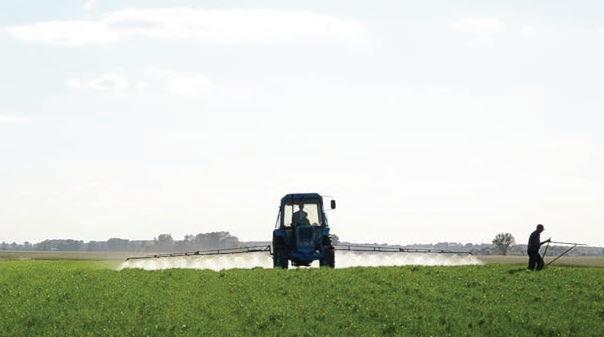
is specially formulated for low Calcium/Magnesium soils to increase leaf size and productivity. Using a highly soluble source of calcium like Cal/Mag 5:1 can quickly remove harmful sodium salts from the root zone, establish valuable calcium, magnesium and nitrogen levels, provide proper nutrition for rapid recovery and vegetative regrowth.
An excellent natural agent for fast pasture recovery
Bio-Boost NPK Foliage Spray is high in energy, with premium levels of Phosphorous, Nitrogen, Potassium and trace elements for good pasture or crop nutrition. Within seconds of application the spray starts to work systemically, helping to correct deficiencies and improve the health of pasture. Reduces the need for supplements, helps with weight gain and productivity.
Bio-Boost NPK Foliage Spray is high in energy, with premium levels of Phosphorous, Nitrogen, Potassium and trace elements for good pasture or crop nutrition. Within seconds of application the spray starts to work systemically, helping to correct deficiencies and improve the health of pasture. Reduces the need for supplements, helps with weight gain and productivity.
Bio-Boost Cal/Mag is specially formulated for low Calcium/Magnesium soils to increase leaf size and productivity. Using a highly soluble source of calcium like Cal/Mag 5:1 can quickly remove harmful sodium salts from the root zone, establish valuable calcium, magnesium and nitrogen levels, provide proper nutrition for rapid recovery and vegetative regrowth.
Bio-Boost NPK Foliage Spray travels right to the roots to compensate soil ‘lock-up’ and deficiencies in pasture and crops.
Call 1800 809 229 for more info or visit gfssolutions.com.au
Aerobic bacteria can change the state of your pond by breaking the solids and fibre content of the effluent. This can represent fertiliser saving, particularly for dairy farms. How much N.P.K. in every year to spread on your pasture? Now imagine if you your own for next to nothing!
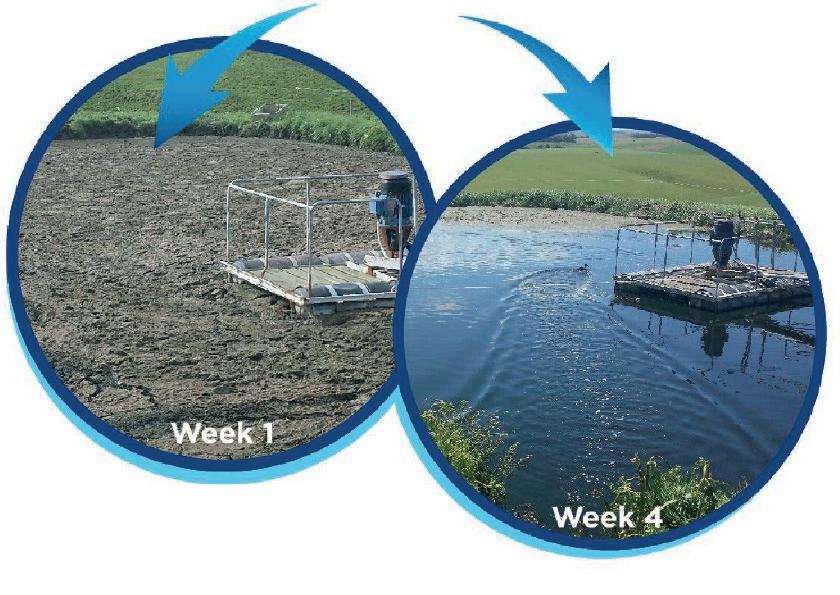
Bio-Boost NPK Foliage Spray travels right to the roots to compensate soil ‘lock-up’ and deficiencies in pasture and crops.
An excellent natural agent for fast pasture recovery
Bio-Boost NPK Foliage Spray is high in energy, with premium levels of Phosphorous, Nitrogen, Potassium and trace elements for good pasture or crop nutrition. Within seconds of application the spray starts to work systemically, helping to correct deficiencies and improve the health of pasture. Reduces the need for supplements, helps with weight gain and productivity.
An excellent natural agent for fast pasture recovery
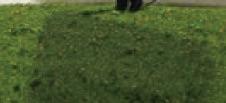
Call 1800 809 229 for more info or visit gfssolutions.com.au
Bio-Boost NPK Foliage Spray with premium levels of Phosphorous, Potassium and trace elements for crop nutrition. Within seconds of spray starts to work systemically, deficiencies and improve the health Reduces the need for supplements, weight gain and productivity. Bio-Boost NPK Foliage Spray roots to compensate soil ‘lock-up’ in pasture and crops.
and deficiencies in pasture and crops.
Bio-Boost NPK Foliage Spray travels right to the roots to compensate soil ‘lock-up’ and deficiencies in pasture and crops.
Call 1800 809 229 for more info or visit gfssolutions.com.au
FREE Info pack! Call 1800 809 229 now, or just send a blank email to: sales@biosystemsaustralia.com.au with "BioForce info" subject line. (We respect your email privacy)
































Call 1800 809 229 for more info or visit gfssolutions.com.au
 Dennis Reynolds was able to harvest hay between floods on the Jarrahmond farm in spring.
Dennis Reynolds was able to harvest hay between floods on the Jarrahmond farm in spring.
4 // GIPPSLAND REGION DAIRY NEWS AUSTRALIA DECEMBER 2022 Bio-Boost delivers systemic NPK & Trace Elements economically! is specially formulated for low Calcium/Magnesium soils to increase soluble source of calcium like Cal/Mag 5:1 can quickly remove harmful sodium salts from the magnesium and nitrogen levels, provide proper nutrition for rapid recovery and vegetative regrowth.
excellent natural agent for fast pasture recovery. Bio-Boost NPK Foliage Spray is high in energy, with premium levels of Phosphorous, Nitrogen, Potassium and trace elements for good pasture or crop nutrition. Within seconds of application the spray starts to work systemically, helping to correct deficiencies and improve the health of pasture. Reduces the need for supplements, helps with weight gain and productivity. Bio-Boost NPK Foliage Spray travels right to the roots to compensate soil ‘lock-up’
Irrigation with a centre pivot, installed in 2019, has guaranteed pasture growth and the harvest of silage and hay on the Jarrahmond farm. Enough fodder is harvested each year for the herds on both farms.
An
SAVE ON FERTILISER TURN EFFLUENT IN TO HIGH GRADE FERTILISER WITH BIOFORCE GOT ISSUES WITH YOUR EFFLUENT POND? • Sludge Buildup • Odour Control • Waste Management • Flies • Phone 1800 809 229 • email: sales@biosystemsaustralia.com.au • web: www.biosystemsaustralia.com.au LOOK WHAT WE CAN DO…
● Increase Fertiliser Value ● Environmentally Friendly ● Saves Farmers Money
Call now
for a free info pack. From $28 per hectare
With Bioforce you add special counteractive bacteria and oxygen in to the effluent pond and watch your problem become an asset. Also solves sludge build-up, odour and fly problems. See the results for yourself on www.biosystemsaustralia.com.au
on 1800 809 229 or email sales@biosystemsaustralia.com.au
“The Friesian bulls are used as mop-ups for three weeks. It gives us an eight to nine week joining period, as a maximum.
“We stick with Australian Friesian genetics for ease of calving. It’s an animal that’s wellsuited to our climate and production system.

“When I select heifers, cows and bulls, I look at fertility, teat placement, pins, for breeding decisions.

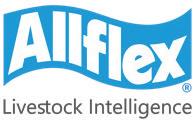
“Heifers and cows that are empty are given a second chance with the second mob.”

A past foray into using Angus genetics, to gain dairy-beef that can grow out on the farm, was short-lived.

“We feel for ease of calving, we should focus on dairy and use Friesian genetics,” Dennis said.
It has got to the point where local farmers have stopped counting the number of floods in the Orbost district.


Flooding out of the catchment and from local rain events has been topped up by regular releases from Jindabyne Dam, sending water down the Snowy River to the mouth of the sea at Marlo.
The latest flood (at time of writing) was in late October. There is standing water and lakes in many paddocks.

For Dennis Reynolds, the regular floods mean degraded laneways and dead pasture.
“Laneway maintenance is an ongoing issue, because it keeps chopping up,” he said.



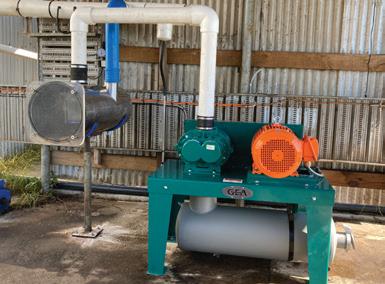
“At the Orbost farm, pasture renovation will be necessary. Orbost is sown with ryegrass, except it’s been covered by floodwater regularly for the past 18 months.
“There’s 130ha of flat country and about 32ha that we haven’t used in the last 18 months.

“Other parts of that farm we’ve sown three times, and we’ve decided not to resow now until the weather dries up.
“We haven’t cut any silage or hay, or got much production out of that flat country.
“We’re getting a lot of weeds including dock, buttercup and other weeds which we haven’t seen in a long time.”
With debris coming through with the water — wattle trees and big logs out of the Snowy River headwaters — fencing
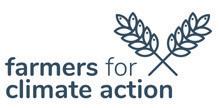
repairs have been a regular occurrence on both farms.
Dennis said he was able to get his milking herd away from the floodwater with 10 minutes to spare before the Snowy River spilled over the six-metre-high levee at Lynn’s Gulch, Jarrahmond.
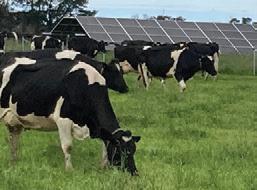

“I could hear it coming, and I got the last lot of the cows off that country 10 minutes before the deluge,” he said.
“The Brodribb and Snowy rivers, Jones Creek and some big gullies all carry water from the catchment.
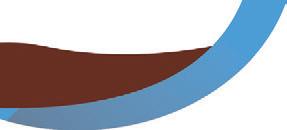
“When it rains, that water spreads out. Then it gets topped up from regular spills from the Jindabyne Dam.
“There’s a lot of kikuyu on the Jarrahmond farm, oversown with ryegrass and clover. That will bounce back.”
Moragh

Lachlan
Charlie
Wilco
Steve
Gabriel
Elissa
Dennis Reynolds has 14 Friesian steer calves this year, and is raising them for the dairy beefmarket.
WATER, WATER EVERYWHERE
GIPPSLAND REGION // 5 DAIRY NEWS AUSTRALIA DECEMBER 2022 Wilandra Farms near Sale has invested heavily in energy-saving measures, renewable energy, irrigation automation and an energy management system to significantly reduce their energy bills and carbon footprint. What they’ve learned has encouraged them to look at other ways to reduce their farm emissions and look for ways to sequester carbon. A range of technology is used on the farm to reduce operating costs and produce better outcomes for the farm and the natural environment.
day will allow
to listen to a range of speakers in the morning and then visit the farm in the afternoon. For further information contact: Jaydee Events Pty Ltd John Hutchison 0412 368 739 or Deanne Kennedy 0419 878 055 email: admin@jaydee.net.au Smart farm power – opportunities in an uncertain carbon future THURSDAY 2ND FEBRUARY 2023 www.ivvy.com.au/event/wilandra2023 Farmers test your knowledge and have a chance to WIN $1,000
Paddocks have been flooding for more than 18 months in the Jarrahmond, Orbost and Marlo district. Farm laneways continue to be chopped up, requiring regular maintenance.
This field
delegates
will
Mackay - Master of Ceremonies,
open the conference
big
Monsbourgh - Rabobank - The
picture and global context
Prell - Farmers for Climate Action - What can landowners do?
Droppert & Sandra Jefford - Wilandra FarmsRenewable energy and steps to minimise emissions
Soutar - AEI - Overview of renewable energy solutions
Hakim - AgVet Energy - The potential to reduce energy use in dairies
Australia - Dairy Australia’s support in reducing energy costs and saving emissions AgVictoria - Understanding and calculating emissions on farm
- Government policy and assistance. Look at: • Solar panels, wind turbines, automation of centre pivots, the energy management system, electric side-byside farm vehicle, and a hydrogen-powered generator. Listen to: • Gerard Callinan from West Gippsland Catchment Management Authority, talking about Wetland restoration of farms. Learn about: • Reducing irrigation energy cost by 80% • Reducing the farm’s carbon footprint • Reducing labour inputs by about 15hrs/week during irrigation season • Improving water use efficiency • Switching irrigation from night to day • Reducing dairy power consumption. 8.45am - 1.00pm The Stables, Sale: Conference Session 1.15pm - 3.00pm Wilandra Farms, Clydebank: On Farm Session & Lunch Hospitality Sponsor Major Sponsor Gold Sponsors Silver Sponsors The Wilandra Smart Power Project received funding through the Victorian AEIP Supporting Sponsor
McNamara - Dairy
AgVictoria
No love for lost labour as
BY JEANETTE SEVERS
A LACK of reliable workers has caused a young couple to exit the dairy industry — at least for a while — and they have sold their property and the milking herd they co-owned with his parents.
Until recently, Shaun and Sharna Cope were sharefarming for his parents, Graeme and Jenny Cope.
Graeme and Jenny developed a 408-hectare beef farm into a thriving dairy farm at Fish Creek, with a 50-stand rotary dairy, undercover treatment areas, calf and machinery sheds and, most recently, investing in an undercover calving platform with feedpads.
Dams with a cumulative 25 megalitres were installed with the aim of ensuring three years of drought-proofing water on the dryland farm.
A whole farm plan enabled them to identify the lay of the land and create 10km of laneways throughout the farm to enable easy access for vehicles and fence 60 paddocks for grazing their cattle.
All fodder is produced on the farm from perennial pastures — harvesting 1500 to 2000 tonnes of silage stored in pits, 1000 round bales of hay and 300 to 400 round bales of silage.
The predominantly Friesian herd of 840 mid-sized cows is split-calving and production averages 30 litres/cow.
Graeme and Jenny were investors in technology, installing integrated software management programs that record every cow, with
automatic drafting and cups on/cups off, and utilising a joining and veterinary treatment history specific to each cow that can be accessed at any time and anywhere on the farm.
Graeme was brought up on a dairy farm and followed his father, uncle and brothers into the industry. Shaun attended Dookie Agricultural College and — after several years building equity in the herd, purchasing a neighbouring title and building a house for their young family — he and Sharna became 35:65 sharefarmers in 2020.
The farm’s capacity was always reliant on the family members and a reliable workforce. Graeme and Jenny decided they wanted to retire and needed to step back from farming.
Unfortunately, their decision coincided with the COVID-19 pandemic, and workers became hard to retain.
The two couples decided to put the farm, including Shaun and Sharna’s title, on the market in May this year.
After interest from local farmers in the considerable asset, it was sold for just over $13 million to a neighbour, Mark Bland, who is continuing to run the dairy farm and purchased the bulk of the milking herd (650 cows).
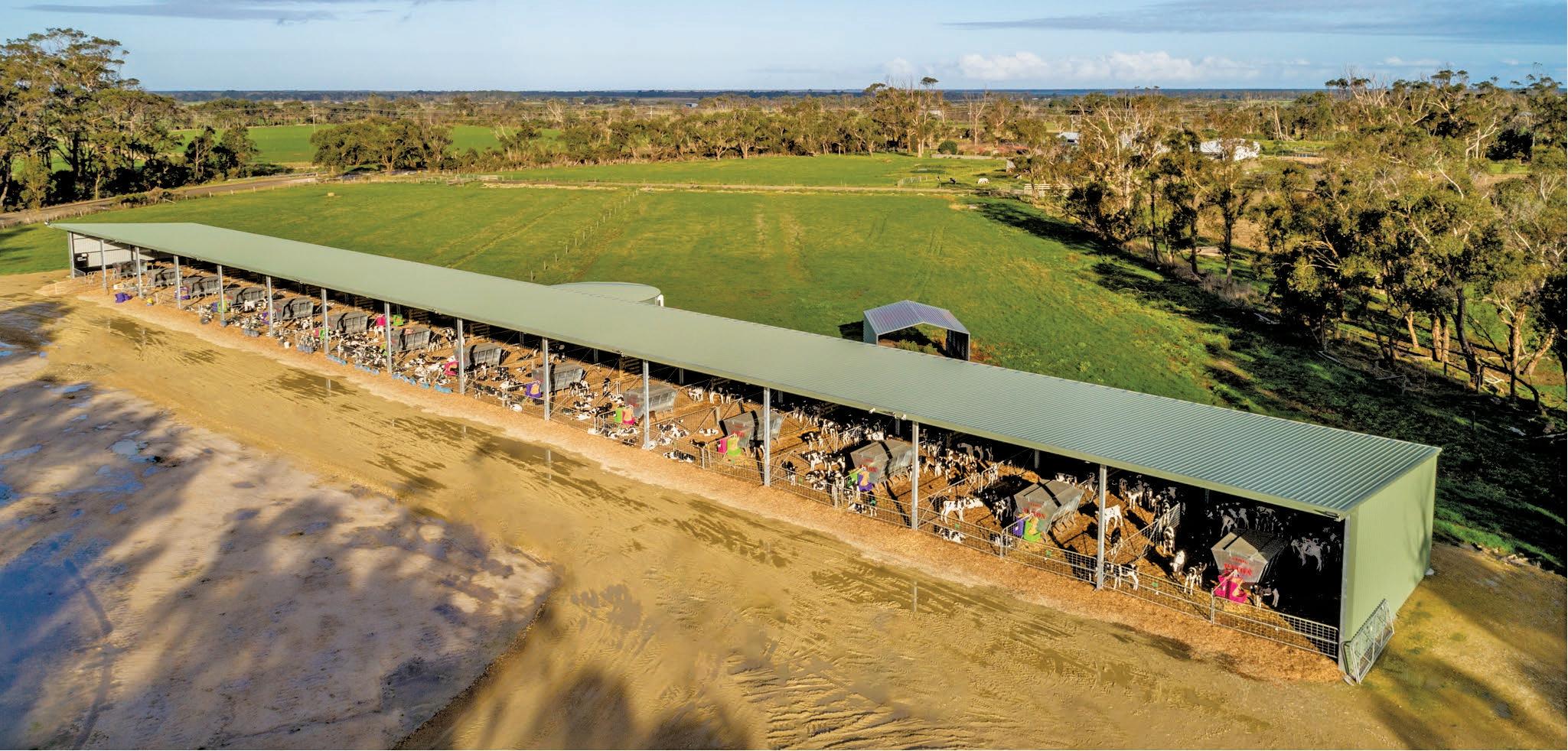
Mark consolidated the Fish Creek farm into his other dairy holdings in early October.
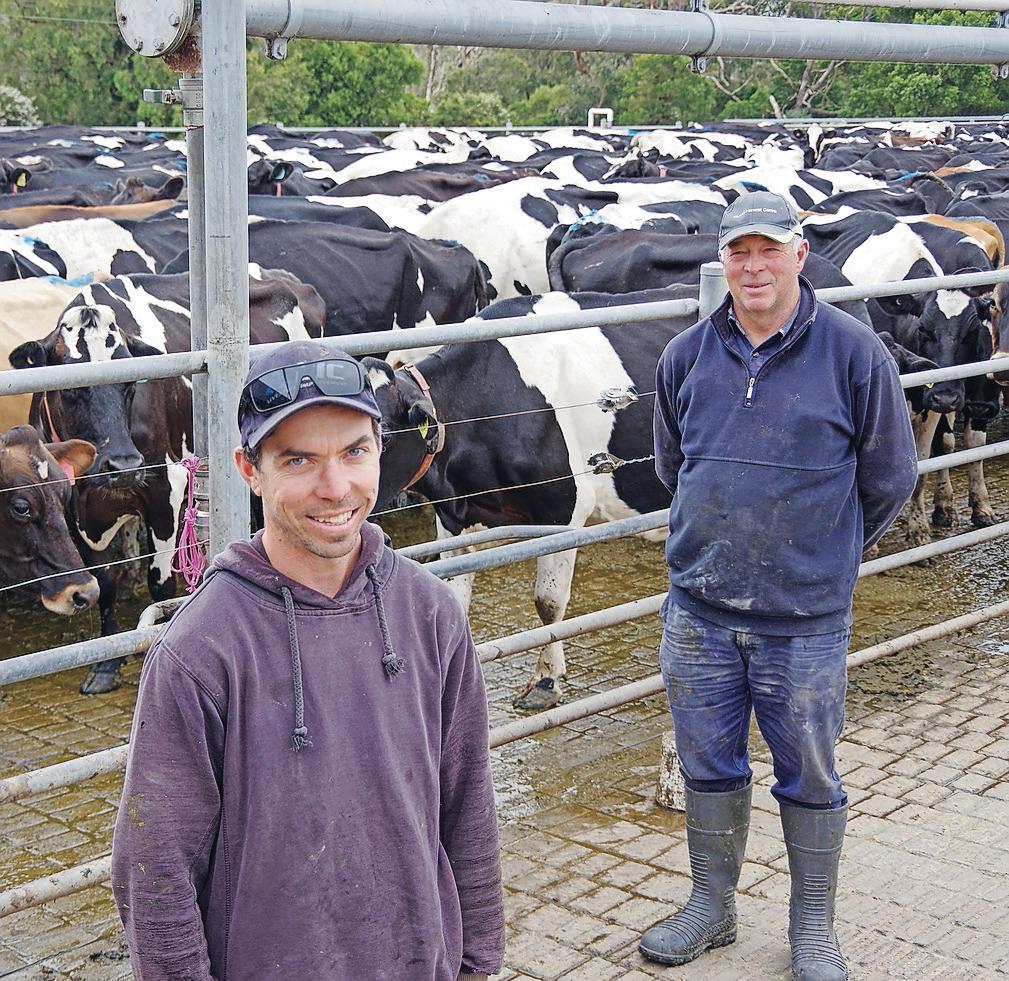
A selection of cows and heifers were sold by the Cope family at Koonwarra VLE on October3. The remaining 50 chopper cows were sold a few days later through the saleyards.
While Shaun and Sharna are taking a break
6 // GIPPSLAND REGION DAIRY NEWS AUSTRALIA DECEMBER 2022 FARM SHEDS Bairnsdale Engineering specialise in the manufacture of: •Feed pad & stockyard covers •Calf rearing sheds •Calving & loafing barns •Hay & machinery sheds •Dairy sheds Options & Features: •Manufactured from UB or RHS hot-rolled steel frames •Hot-dip galvanised for ultimate corrosion protection •Ridge and eave ventilation designs •Eave overhangs for weather protection •Custom designed gutter to reduce plumbing site works •Sliding / roll up door options •Standard sizes or custom built to suit your site •Designs to suit concrete panels or nib walls •Site specific engineering •Permit assistance Manufacturers of Farm & Industrial Sheds Since 1976 03 5152 2321 bairnsdaleeng.com.au sales@bairnsdaleeng.com.au built like they should be
Shaun and Graeme Cope, with wives Sharna and Jenny, made the decision to sell their Fish Creek dairy farm this year. A neighbour purchased the property and 650 cows from their herd.
family leaves industry

from dairy farming, and have bought a house locally, they have retained the 2022 and 2021 autumn-drop calves and are raising them to sell.

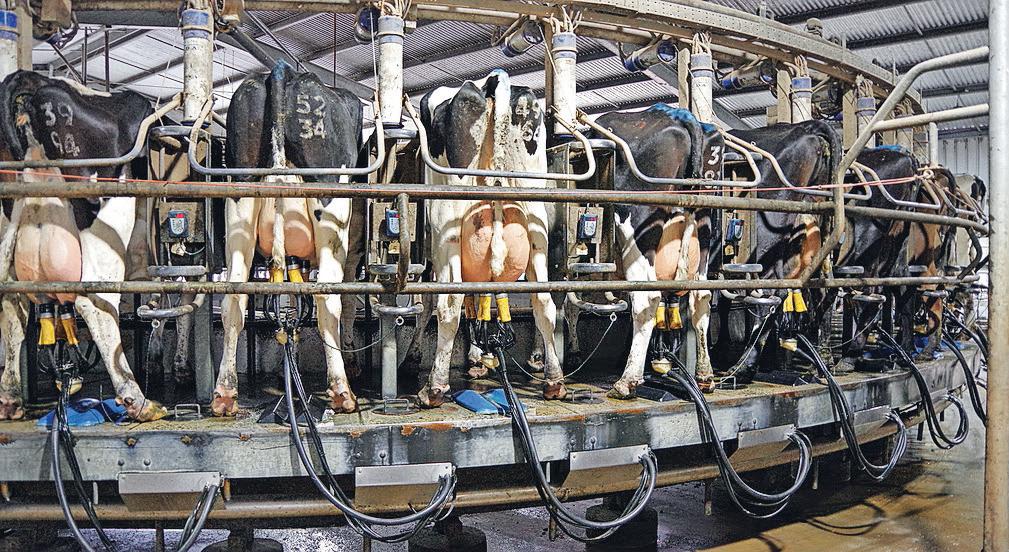

“We’ve got 120 autumn-drop heifers from this year that are nearly ready to sell to the export market,” Shaun said.
“Last year’s autumn calves are in-calf and we’ll sell them early next year, before they calve.”
The heifers from both drops are still owned 35:65 by Shaun and Sharna with Graeme and Jenny.
Shaun and Sharna said the decision to sell was influenced by workforce shortages.
“We can’t get enough workers who are reliable to keep the farm going,” Sharna said.
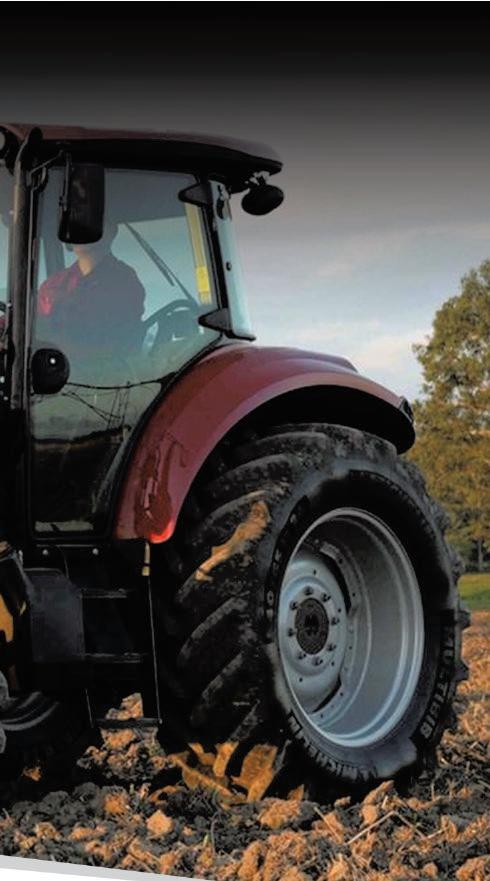
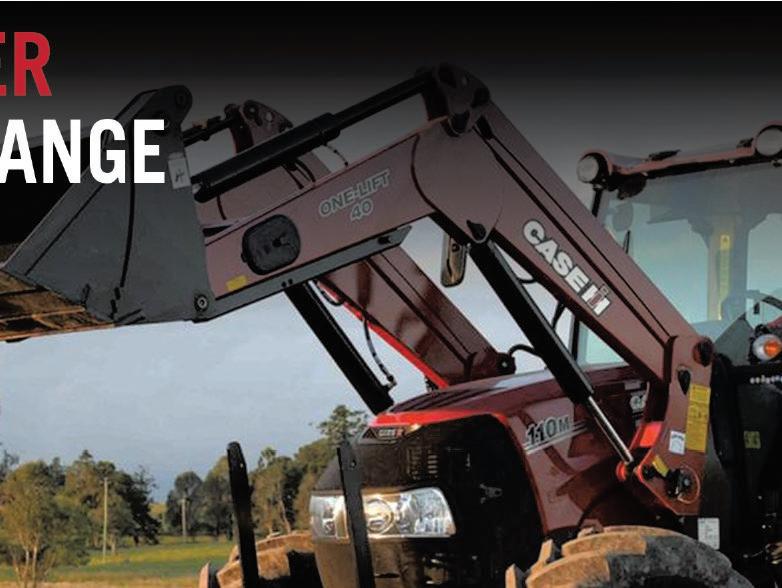
“In the last eight months before selling the farm, we really struggled to find staff who wanted to commit and would turn up for their milking shifts,” Shaun said.
He said workers also wanted accommodation on the farm, an asset they could not offer. Because of the isolation of the farm, without public transport locally, he understood that people wanted to work close to their homes.
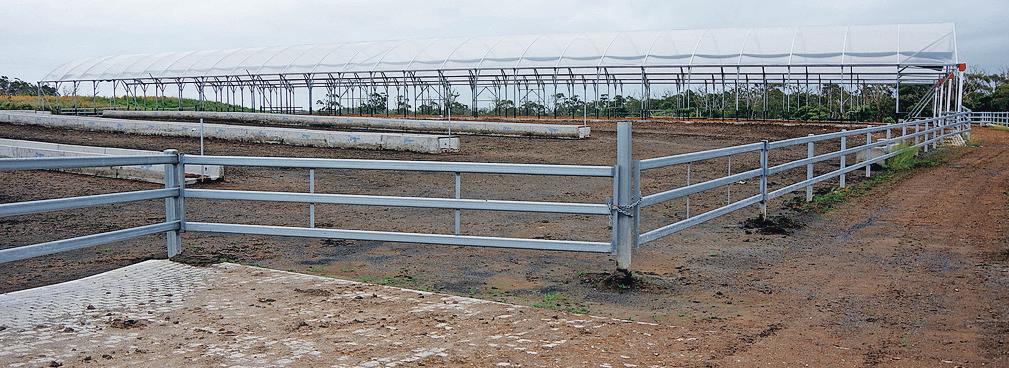
Shaun also said the dairy industry was competing for workers against industries with better paying jobs, and against a constantly rising cost of living.
Shaun and Sharna are enjoying spending time with their young family. Graeme and Jenny are travelling.
Sale details, see page 8.
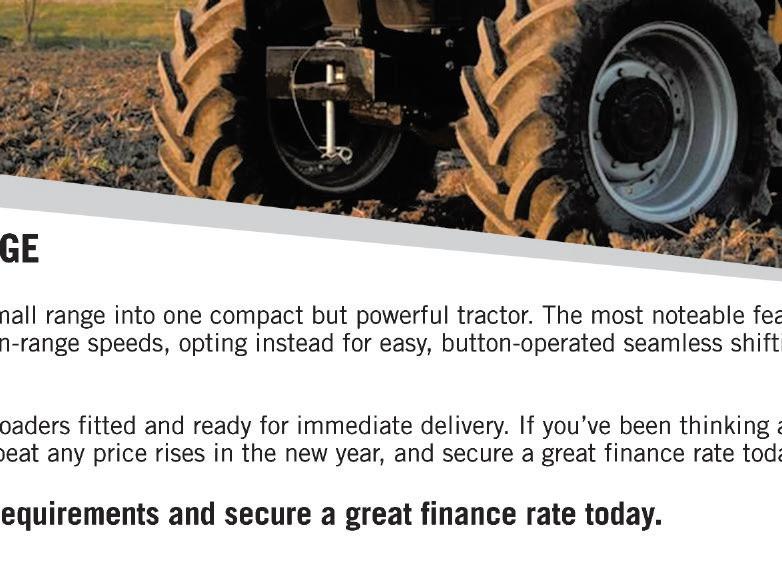
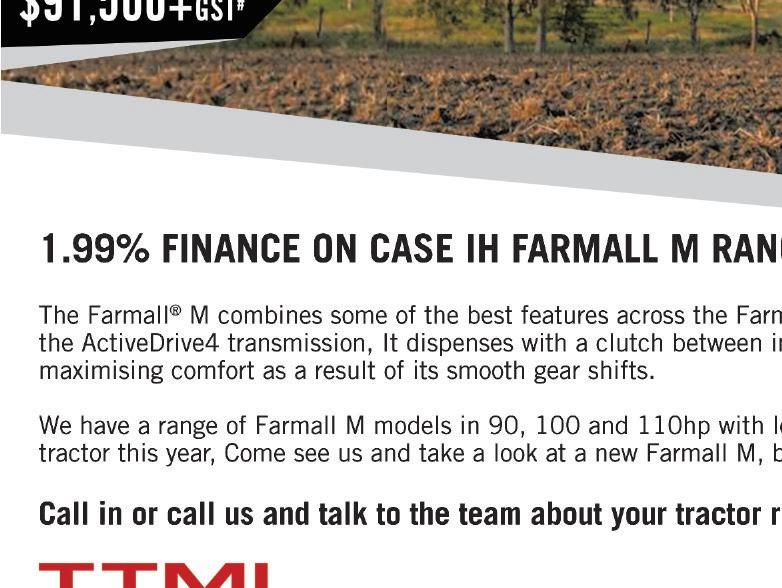
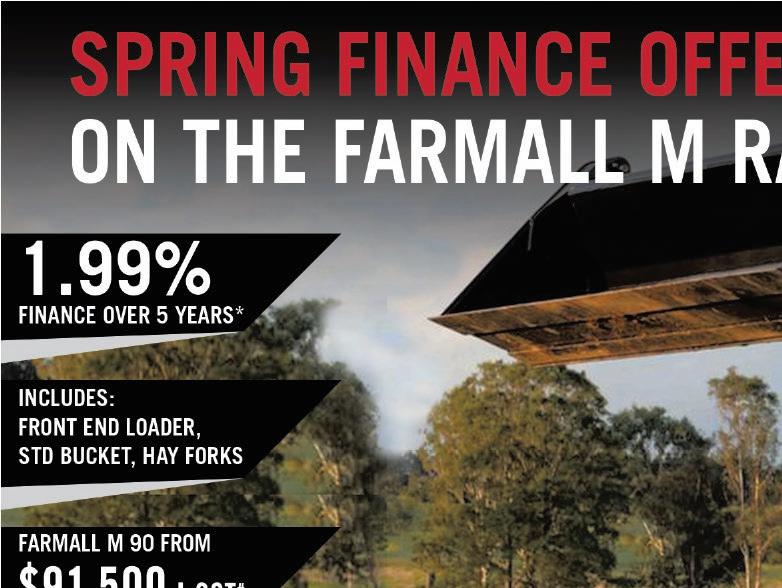 Farm infrastructure includes automatic feeders in a dedicated calf rearing shed.
Recent infrastructure improvements to the Copes’ Fish Creek farm included an undercover calving area and feedpads.
Farm infrastructure includes automatic feeders in a dedicated calf rearing shed.
Recent infrastructure improvements to the Copes’ Fish Creek farm included an undercover calving area and feedpads.
GIPPSLAND REGION // 7 DAIRY NEWS AUSTRALIA DECEMBER 2022
The lack of reliable workers, especially for milking, precipitated the decision to sell the farm.
Strong results at joint sale
 BY JEANETTE SEVERS
BY JEANETTE SEVERS
A CONJUNCTIONAL dairy sale hosted by Nutrien Ag Solutions and SEJ Livestock saw dairy cows sell to $4400, with strong competition around the ring and online.
Nutrien Ag South Gippsland Livestock auctioneer Jack Ginnivan said a good crosssection of buyers made for a very strong sale.
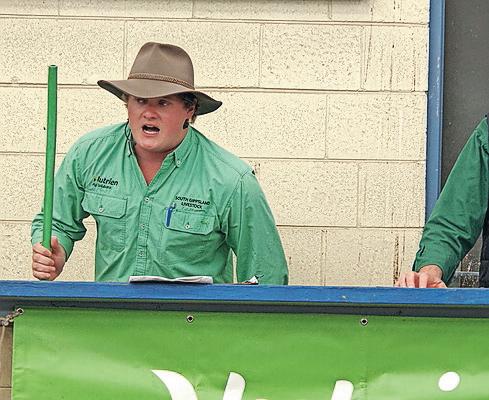
By the end of the day on October 3, 550 dairy cows had sold over three sales in a week at Koonwarra VLE.
On October 3, as well as 70 freshly calved and pregnancy-tested-in-calf Friesian and Jersey cows and heifers from the Cope farm, there were 40 freshly calved Friesian and Friesiancross cows sent in by G. Grant of Glen Alvie, 15 freshly calved Friesian and Friesian-cross cows sent in by M. Bright of Yanakie, and 30 freshly calved Friesian, Jersey and Friesian-cross cows sold by P., H. and M. Thomson of Fish Creek.
The Cope autumn and spring calvers were the feature, and sold twice to a top of $3000, averaging $2100.
The first cow, a three-year-old Friesian producing 33 litres, sold at $2000, and prices went upwards from there, with Lot 9, a 2.5-year-old milking 35 litres, selling for $3000.
The first Jerseys in the ring, Lots 12 and 13, sold for $2500 and $2400 respectively. They were two-year-old heifers milking 25 and 27 litres each.
Lot 61, a six-year-old Jersey milking 26 litres,
sold for $2900. Lot 23, a Jersey-cross two-yearold milking 34 litres, reached $3000.
P., H. and M. Thomson put up 35 cows with an average production of 35.8 litres/day, from a herd ranked number one by Burra Foods for BMCC.
The Thomson syndicate sold freshly calved Friesian cows to a top of $4400 for Lot 102, a three-year-old cow.
Lot 101, a five-year-old cow, sold at $4250, and 16 cows ranging in age from 2017 to a 2020-drop sold for $3000 to $3900. The entire cohort averaged $2970.
M. Bright sold 18 cows from a herd averaging 32 litres/cow, to a top of $4200 twice, for Lots 70 and 71. Lot 70 was a five-year-old cow and Lot 71 was three years old.
A further nine cows, ranging in age from 2016 to a 2019-drop, sold between $3300 and $4000 each. The entire cohort averaged $3300.
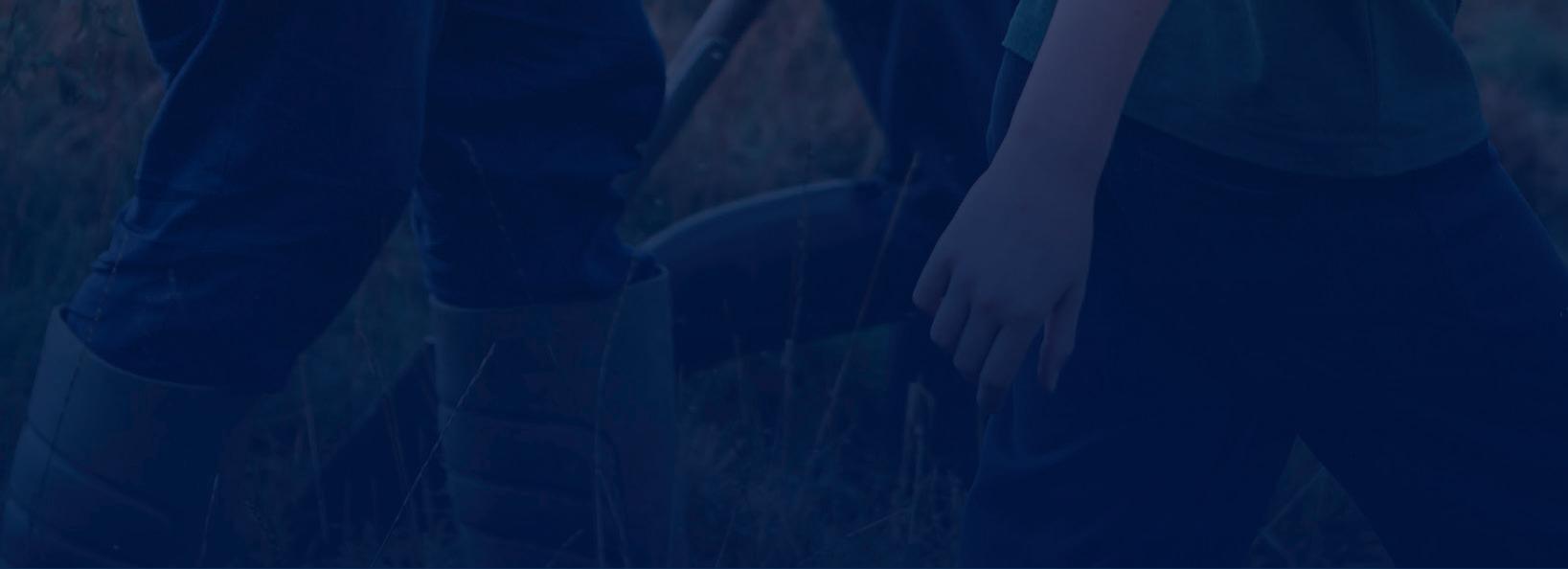
G. Grant sent in freshly calved first to third lactation heifers and cows, from a herd that averages 550kg of milk solids. Their sale peaked at $2800 for Lot 147, a four-year-old Friesian cow, and averaged $2200.
Two-year-old freshly calved heifers held their value, with 10 going under the hammer to a top of $2700 (twice), and most of them selling for $2300 to $2700.
Terry Ginnivan, principal livestock agent with Nutrien Ag South Gippsland Livestock, said all the cows on offer were sold because of workforce shortages.
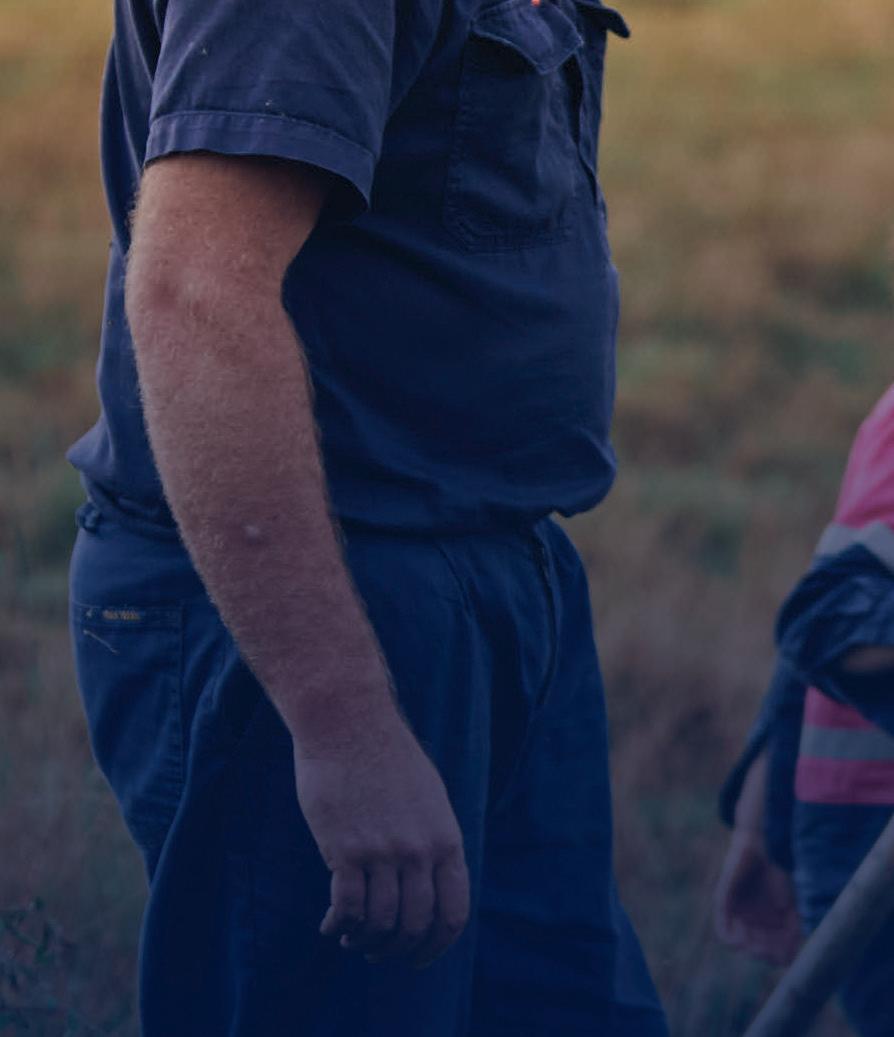

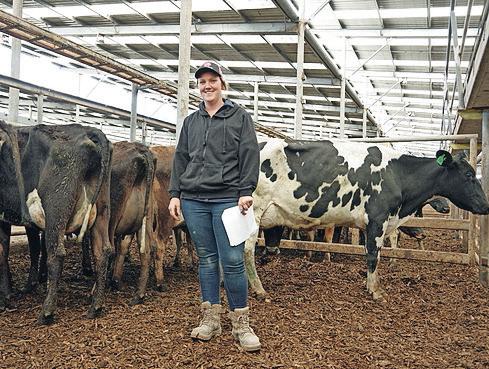
“Herds are being reduced or sold because of

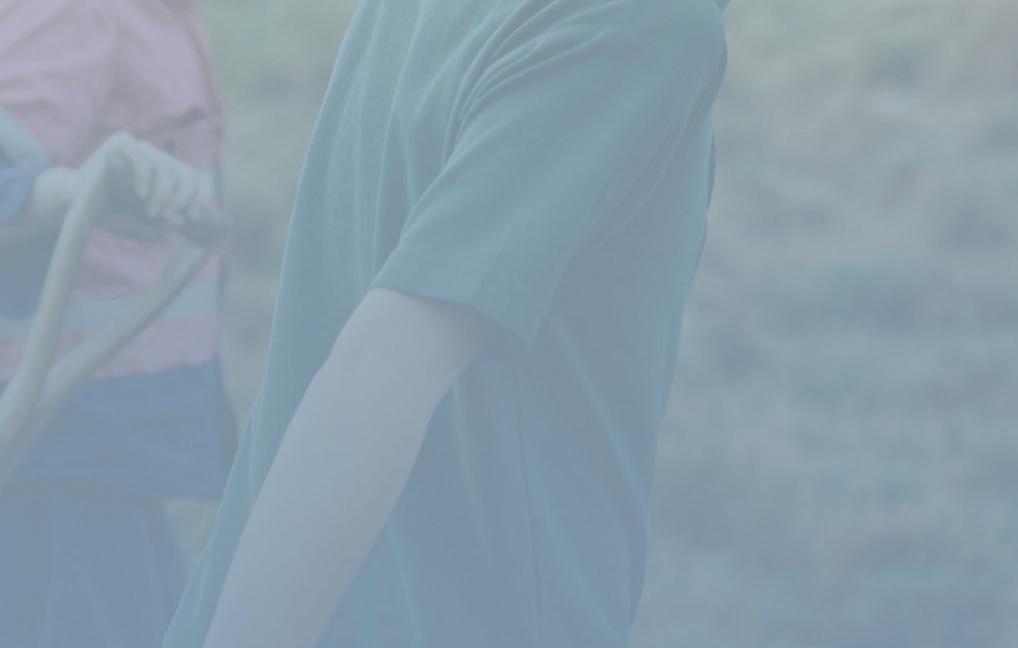

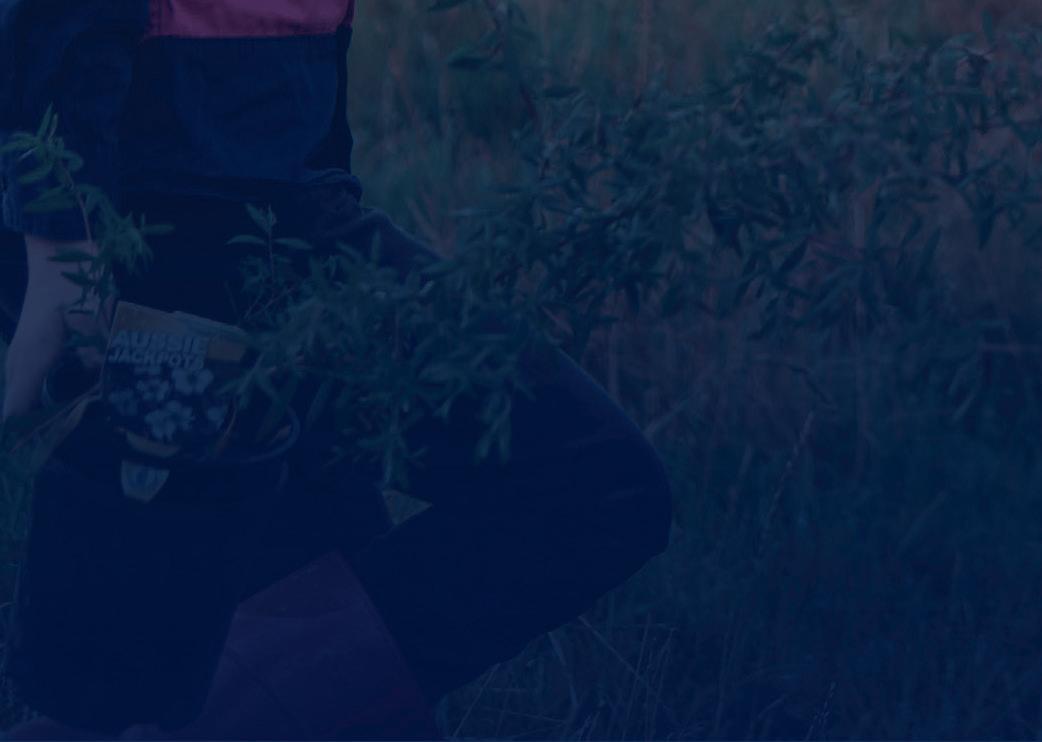

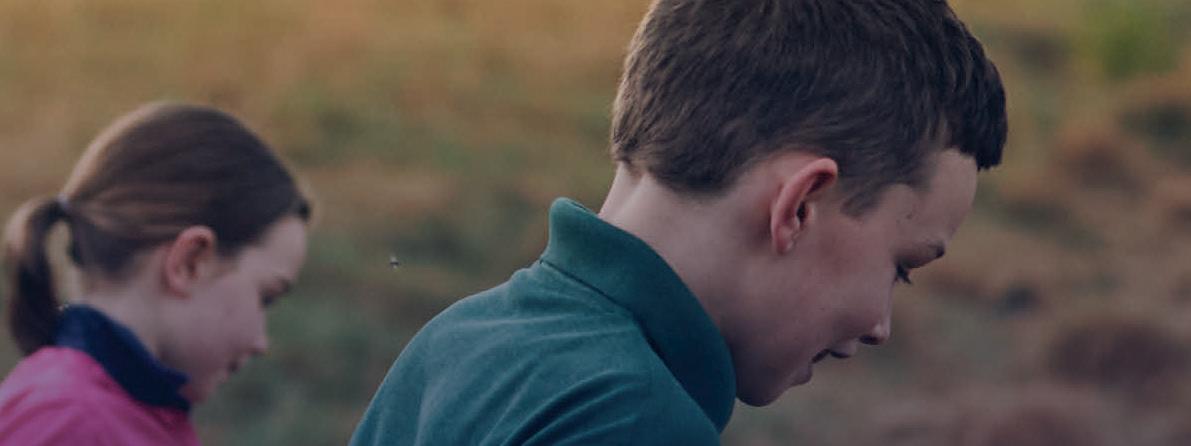
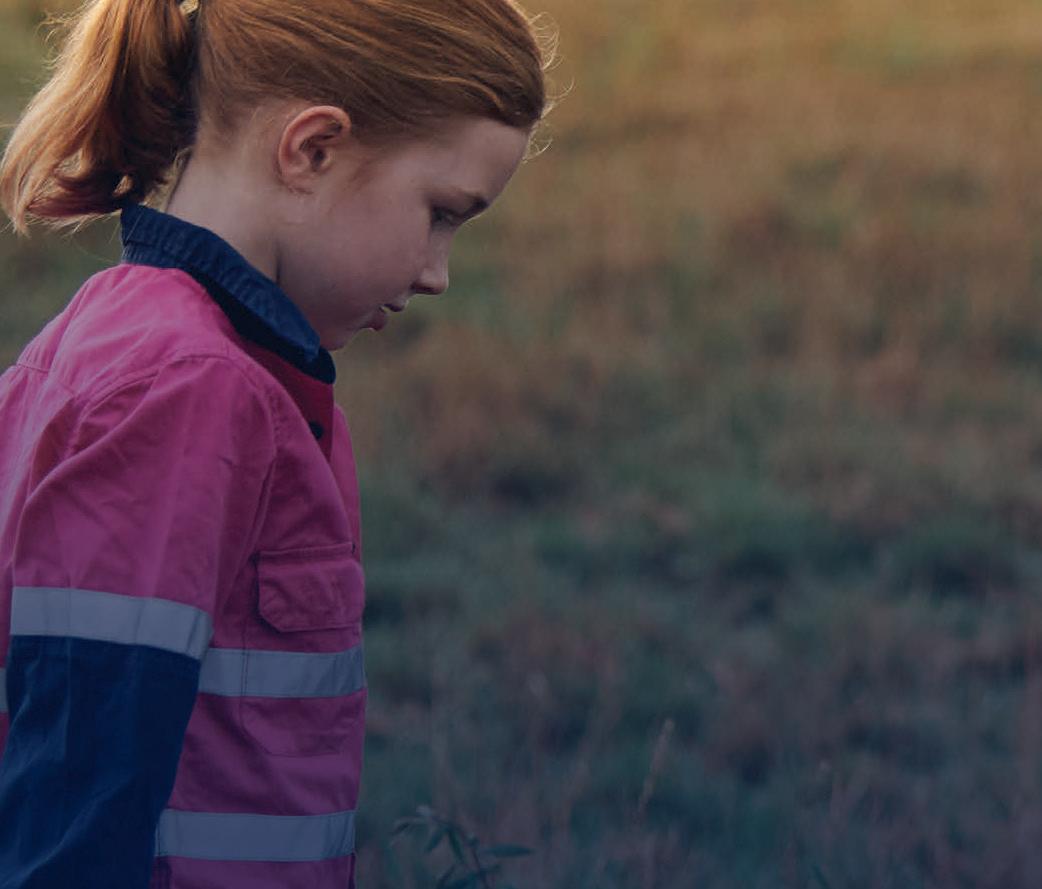
the workforce shortage in the dairy industry,” he said.
In the SEJ dairy cow sale, three vendors put up 42 cows and heifers, ranging in age from first lactating heifers to mature cows.
Oakdale Dairies, of Longwarry, sent in 24 head, calved since August, of which six were heifers. They sold to a top of $2100 for a third-lactation Friesian cow.
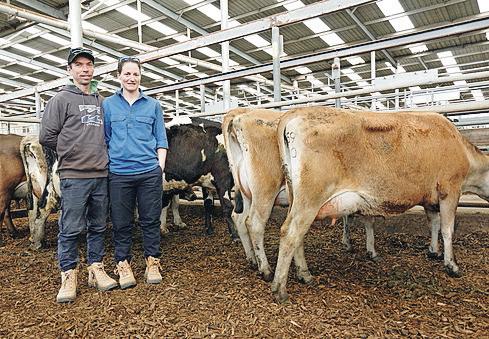
Kaedem Dairies, Foster, sent in 10 springdrop 2020 heifers, not rejoined, that sold to $2900 twice, averaging $2370. Most of the lot were bought by the same bidder.
Inlet Dairy, Foster, sent in seven springdrop 2020 heifers and a 2017-drop cow, none rejoined, that sold to a top of $2700 twice, averaging $2287.
Auctioneer Jack Ginnivan said a good crosssection of buyers made for a very strong dairy cow sale at Koonwarra VLE on October 3.
Shaun and Sharna Cope, along with his parents Graeme and Jenny, recently sold their dairy farm at Fish Creek, along with 650 cows. The remainder of the herd was sold at Koonwarra VLE in early October.
8 // GIPPSLAND REGION DAIRY NEWS AUSTRALIA DECEMBER 2022 Fair or equal? How to pass on the family farm Join our Succession Planning Day exclusive to dairy farmers where guest speakers Colin Wright from Phillipsons and Matt Harms from ONFARM Consulting will discuss: • Tips and tricks to succession planning • Business structures • Tax implications • Role changes • Transferring assets Registrations essential. For more information or to register, scan the QR code or contact Kim Price Regional Extension Officer at GippsDairy on 0456 657 162 or kimberley@gippsdairy.com.au THURSDAY 9 FEBRUARY 2023 10:00am–2:00pm Tinamba Hotel, 4-6 Tinamba-Seaton Rd, Tinamba dairyaustralia.com.au
Kellie Brian, of Yannathan, purchased nine freshly calved heifers, including three from the Cope consignment, to top up her herd’s production.


























































 Dennis Reynolds was able to harvest hay between floods on the Jarrahmond farm in spring.
Dennis Reynolds was able to harvest hay between floods on the Jarrahmond farm in spring.



























 Farm infrastructure includes automatic feeders in a dedicated calf rearing shed.
Recent infrastructure improvements to the Copes’ Fish Creek farm included an undercover calving area and feedpads.
Farm infrastructure includes automatic feeders in a dedicated calf rearing shed.
Recent infrastructure improvements to the Copes’ Fish Creek farm included an undercover calving area and feedpads.












